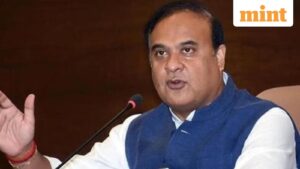The Health Ministry recently informed Parliament that the National Medical Commission (NMC) data indicates there are 1,386,157 registered doctors in India, a figure nearly identical to the 1,386,136 cited in the Lok Sabha in August of the previous year. This raises questions about the addition of just 21 doctors over the past year, particularly given that approximately 80,000 new doctors graduated during this period.
A review of state-wise NMC data from last year, compared with state council records, reveals significant discrepancies. For instance, NMC data indicated that Delhi had fewer than 31,500 doctors, while the state council data for 2020 showed more than 72,600. This suggests a staggering gap of over 40,000 doctors in the NMC records for the city.
In another example, the NMC reported that the Kerala Medical Council had over 73,000 registered doctors. However, a council member informed The Times of India that the actual number exceeds 100,000, highlighting a difference of 36,000. Similarly, while the NMC reported under 150,000 doctors in Tamil Nadu, state council figures exceed 200,000.
Dr. Arun Kumar, national general secretary of the United Doctors Front (UDF), stated, “This is not a clerical slip or a marginal miscalculation. It is a glaring 41,000-doctor gap between what the Delhi Medical Council (DMC) officially recorded and what the union health ministry or NMC told Parliament.” He emphasized that presenting incorrect or misleading information to the Lok Sabha is a violation of Parliamentary privilege and obstructs the duties of Members of Parliament.
The UDF filed a Right to Information (RTI) request for data on registered medical practitioners in Delhi. The DMC responded that the total number of registered voters for the council election in 2014 was 57,749, which increased to 72,636 for the 2020 elections. “Only those who have renewed their registration can vote for the council election. So, 72,636 is authentic data as of 2020,” said Dr. Kumar. With a few hundred new registrations each year, this number should be even higher currently.
These discrepancies between actual registrations in state councils and what is reported by the NMC skew the calculation of the doctor-to-population ratio. In the case of Delhi, NMC’s data is over 66% less than the DMC count, while in Kerala, the discrepancy stands at 33%.
Dr. Kumar pointed out, “For Delhi, a city with one of the highest patient inflows in the country, undercounting by 40,000 doctors distorts the entire healthcare planning process.” He further noted that the government is proposing a compulsory bond for medical graduates in Delhi, citing a doctor shortage. “If they cannot get the Delhi data right, one can only wonder about other states,” he remarked.
The NMC replaced the previously corrupt and non-transparent Medical Council of India in September 2020. However, five years later, the NMC has not maintained an updated medical registry, which is vital for decision-making. A member of the Kerala Council stated, “NMC is totally defunct. Appointments are not made on time. Most posts have been lying vacant for more than a year. They don’t even respond to communication from state councils. There has been no process to update their database or to implement a system by which additions to the state councils would lead to an automatic update of NMC’s registry.”










